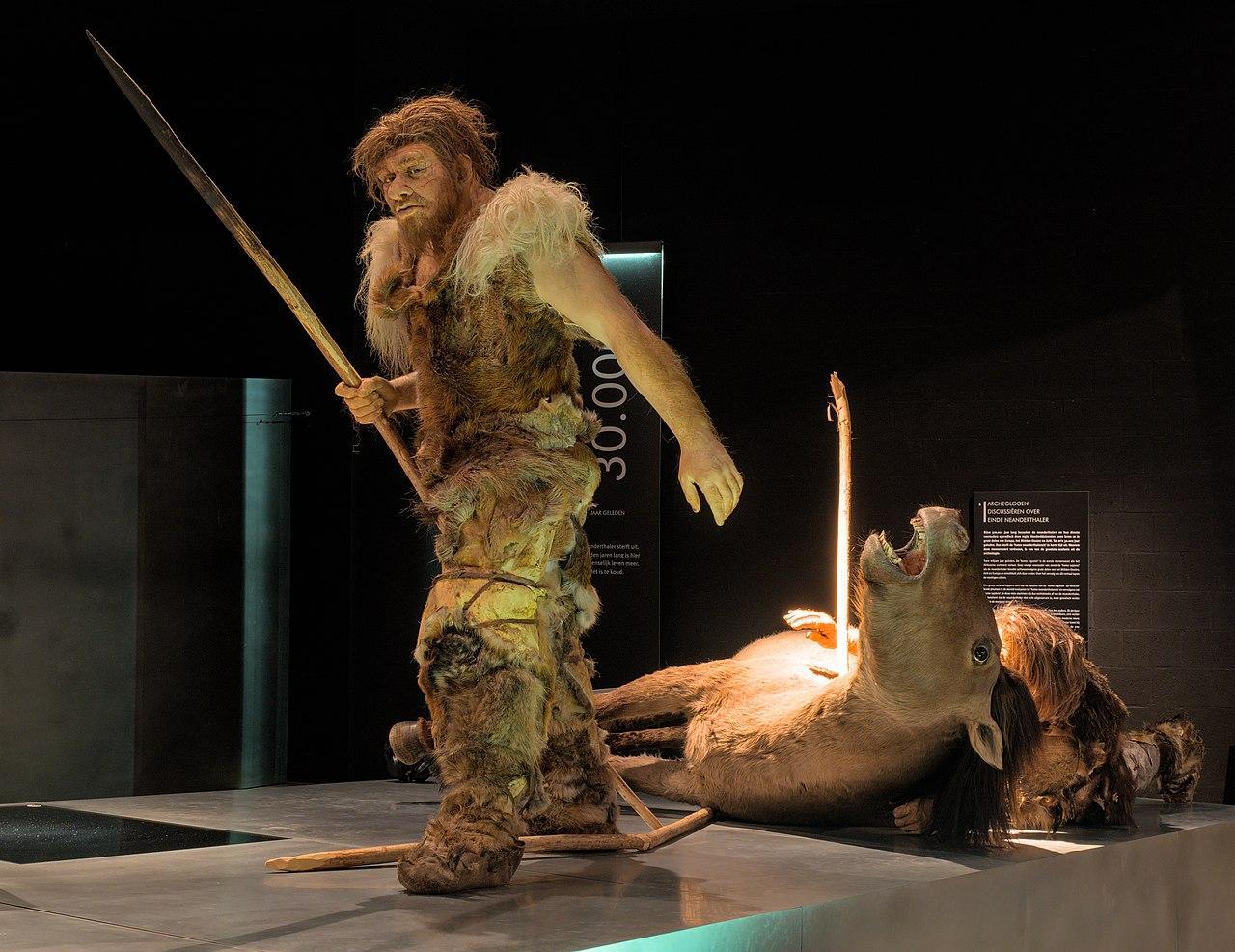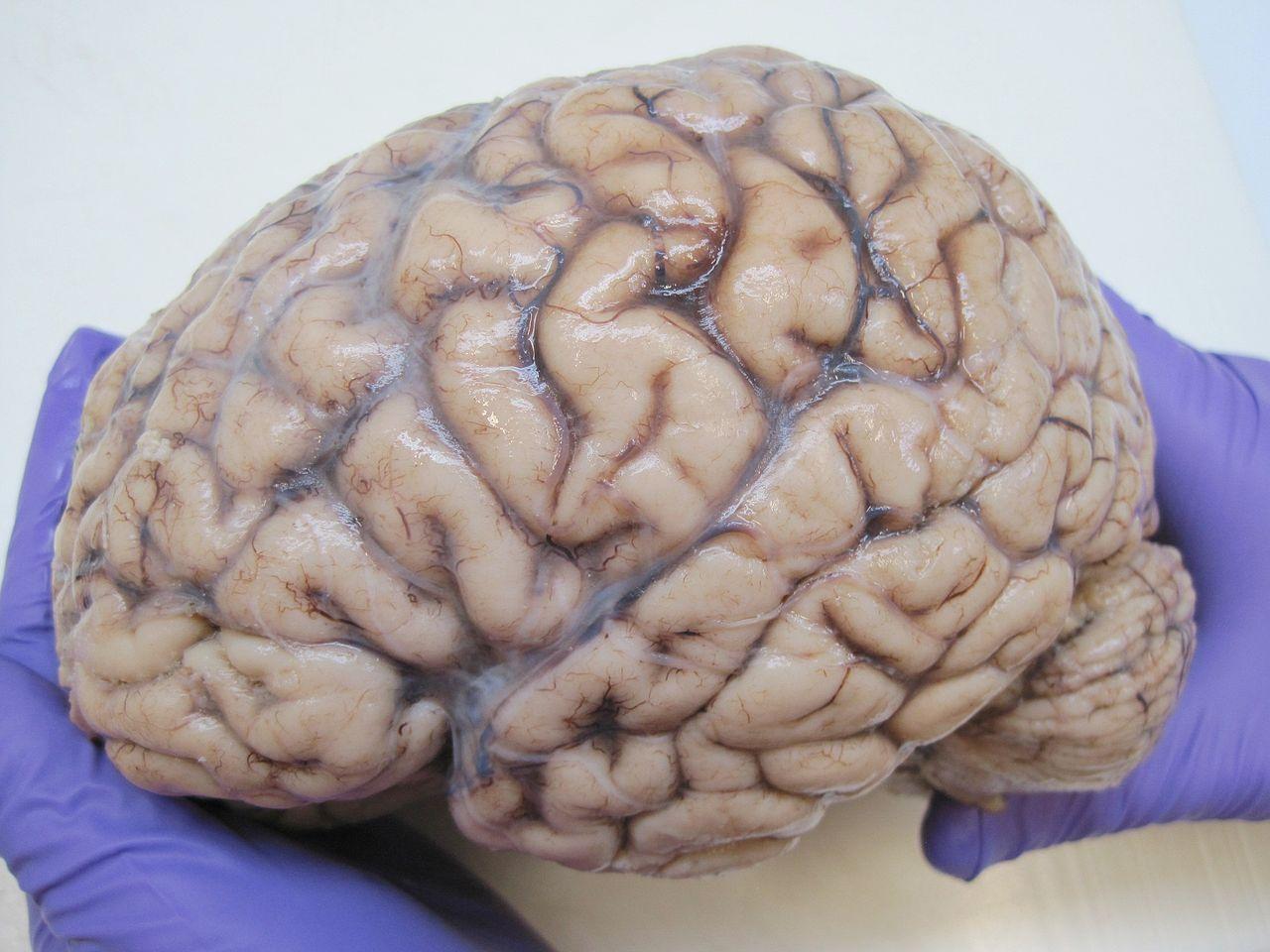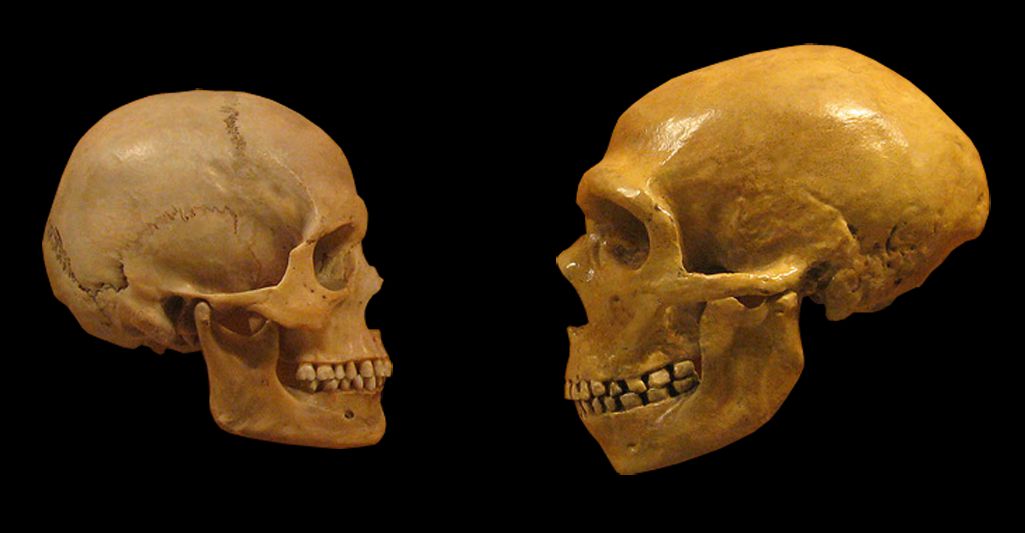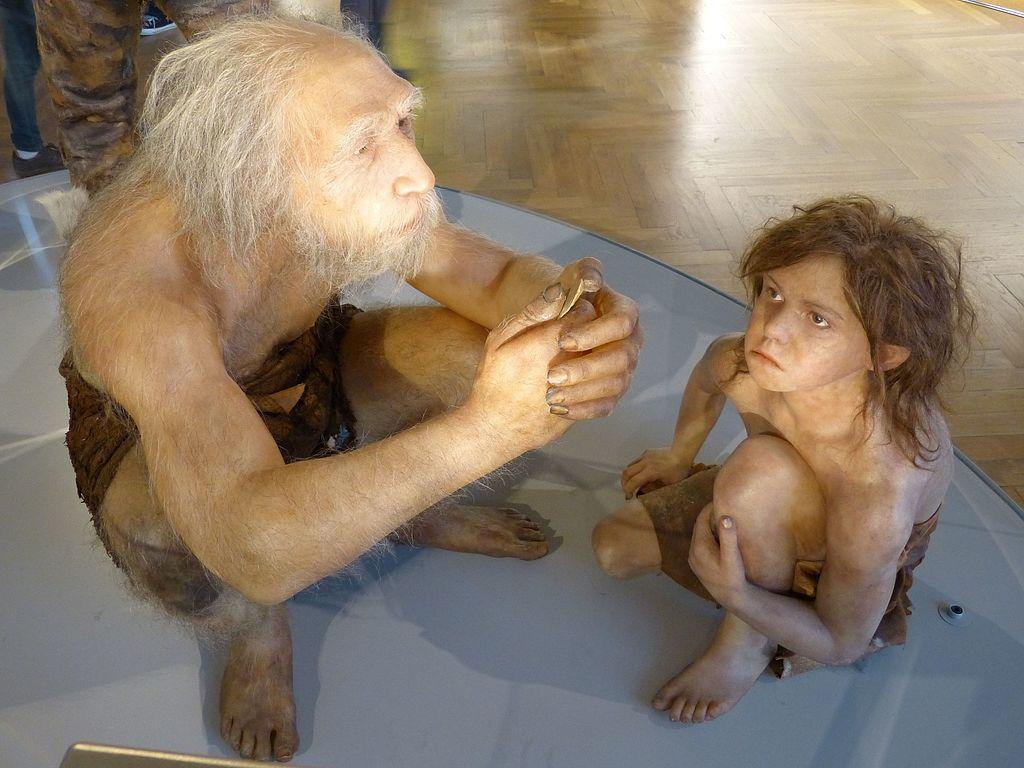The Difference Between the Language of Neanderthals and Modern Humans
The emergence and intriguing history of the Neanderthals, a hominin group of remarkable complexity, continues to captivate and engage researchers around the world.
One question that remains at the forefront of the investigation into this ancient species is whether or not they had a vocal language like modern humans. Well, according to researchers, they did. But there is one significant difference between the language of the Homo sapiens and that of our shorter and stockier relatives.
Ancient Species of Humans
For millions of years, various hominins, a group that consists of modern humans, extinct human species, and all of our immediate ancestors, have inhabited Earth, each leaving their own mark on the planet.

Source: Wikimedia
Over the past century, anthropologists have made fascinating discoveries that shed light on the various hominin species that once existed on our planet. However, none appear to have spent as much time around our own species as the Neanderthals.
Who Are the Neanderthals?
The fossil record shows that the Neanderthals were a hominin group that emerged in Eurasia at least 430,000 years ago.

Source: Wikimedia
They were shorter and stockier when compared to Homo sapiens and had distinct facial features, including a very large and wide nose. These unique features can be attributed to the fact the two species emerged from a common ancestor around 600,000 years ago.
Homo Sapiens and their Use of Metaphors
Despite existing on Earth for hundreds of thousands of years, Neanderthals eventually went extinct around 40,000 years ago, whereas humans went on to thrive.

Source: Wikimedia
For some time, researchers have postulated the outcome may have been influenced by several critical differences in thought and language. One unique example is Homo sapiens were able to come up with complex ideas in the form of metaphors, i.e., the ability to compare two totally unrelated things.
What Was the Neanderthal Mind Capable Of?
The idea that humans have an advantage in terms of cognitive abilities is a widely debated topic in anthropology. Some experts argue that the archaeological record provides sufficient evidence to suggest profound differences, while others disagree.

Source: Wikimedia
Unraveling the mystery surrounding the emergence of language has been challenging. However, modern discoveries in archaeology and other disciplines have allowed researchers to begin piecing together the complexity of the Neanderthal mind and its capabilities.
Neanderthals Had Vocal Cords
Researchers have discovered anatomical evidence that suggests the Neanderthals had vocal tracts reasonably similar to modern humans, meaning they had the potential to communicate through speech.

Source: Wikimedia
It is well known that humans have a small percentage of Neanderthal DNA in their genes. This indicates that some form of communication must have existed between Homo sapiens and Neanderthals in ancient times.
Researchers Create a 3D Reconstruction of a Neanderthal Brain
In an attempt to better understand the cognitive abilities of Neanderthals, scientists produced a 3D reconstruction of their brain by “deforming that of H. sapiens and fitting it into a cast of the brain (endocast) from a Neanderthal, indicates significant differences in structure.”

Source: Wikimedia
Researchers were able to deduce significant cognitive differences from this. Neanderthals, with a larger occipital lobe, could allocate more brain matter to visual processing, but this came at the cost of other tasks, including language.
The Unique Spherical Shape of Modern Brains
Neanderthals also had a smaller cerebellum, which greatly differed in shape from that of modern humans. This subcortical structure contributes to various tasks, including language processing and speaking.

Source: Wikimedia
The unique spherical shape of the brain associated with Homo sapiens evolved after our species emerged over 300,000 years ago. Many experts suggest this played a role in the advancement of language.
The Major Differences
According to Steven Mithen, there are several major differences between the language of Neanderthals and modern humans, which “begins with iconic words being spoken by the ancient human species Homo erectus around 1.6 million years ago.”

Source: Wikimedia
As the words were passed on from generation to generation, various rules of syntax evolved, which provided both the Neanderthals and Homo sapiens with similar cognitive and linguistic abilities.
The Divergence of Languages
Eventually, however, as the two species continued to evolve, their languages diverged. “The H. sapiens brain developed its spherical form with neural networks connecting what had been isolated semantic clusters of words,” said Mithen.

Source: Wikimedia
He added, “These remained isolated in the Neanderthal brain. So, while H. sapiens and Neanderthals had equivalent capacity for iconic words and syntax; they appear to have differed with respect to storing ideas in semantic clusters in the brain.”
Neanderthals Didn’t Use Metaphors
According to Mithen, the emergence of using metaphors played a pivotal role in the evolution of our species cognitive abilities.

Source: Wikimedia
“By linking up different clusters in the brain that are responsible for storing groups of concepts, our species gained the capacity to think and communicate using metaphor. This allowed modern humans to draw a line between widely different concepts and ideas,” he said.
The Transformation of Thought, Culture, and Language
Experts believe the emergence of metaphors allowed the Homo sapiens to think of profoundly complex and abstract concepts, a feature that played a significant role in transforming language.

Source: Wikimedia
Metaphors essentially transformed the language and revolutionized the thought and culture of our species, resulting in “the creation of a deep divide with the Neanderthals. They went extinct while we populated the world and continued to flourish.”
